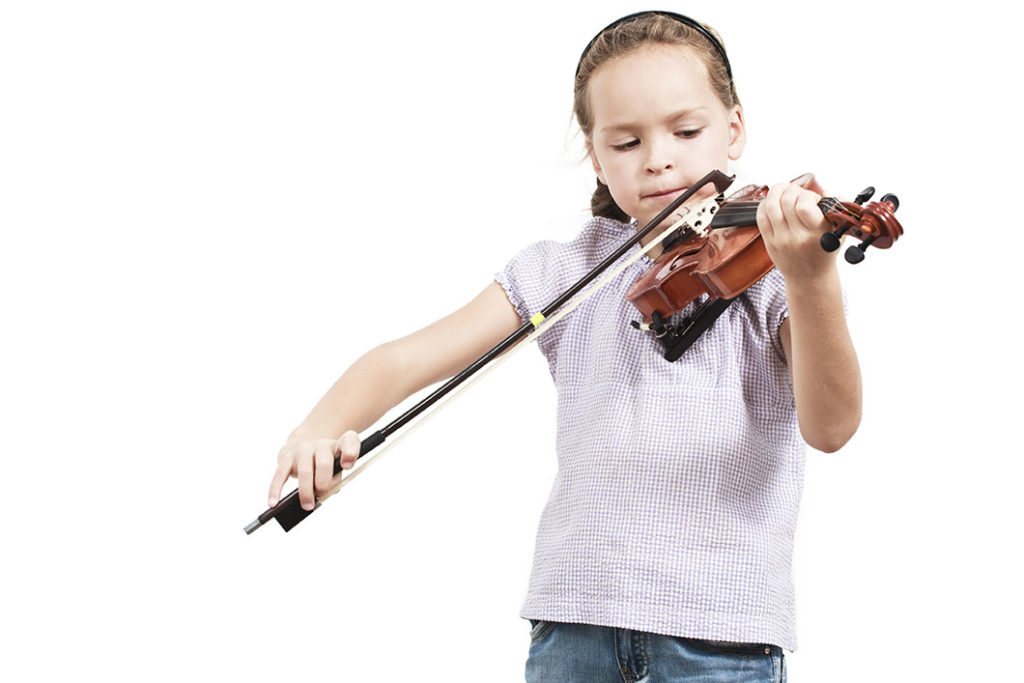
Better Speech Comprehension
If you have been fortunate enough to enjoy music training in your youth, you may be experiencing the benefits today in improved hearing.
Researchers have found that 4-14 years of music training during childhood or young adulthood is associated with faster neural timing in response to speech later in life. This is significant because older adults commonly lose the ability to discern rapidly changing sounds— and as a result they may no longer comprehend what is happening around them. New evidence shows that this age-related decline is not inevitable and that benefits from music training earlier in life can persist into older age, even if one is no longer practicing music.
The study is available in The Journal of Neuroscience (2013; 33 [45], 17667-64).
Stronger Language Skills and Executive Function
Adding to our understanding of the significance of early musical training, researchers have found that the volume of brain regions related to hearing and self-awareness appear larger in those who began taking music lessons before age 7. These regions influence language skills and executive function.
“Early musical training does more good for kids than just making it easier for them to enjoy music; it changes their brain, and these brain changes could lead to cognitive advances as well,” said study author Yunxin Wang of the State Key Laboratory of Cognitive Neuroscience and Learning at Beijing Normal University in China, in a press release from the Society for Neuroscience.
The study was presented at Neuroscience 2013, the annual meeting of the Society for Neuroscience, held in San Diego in November. To learn more, go to www.brainfacts.org.
Got Rhythm?
Step training and other classes where it is important to move to a steady beat may be improving cognitive fitness as well as physical fitness.
Moving to a beat requires synchronization of parts of the brain responsible for hearing and for movement. People who are more capable of moving to a beat show more consistent brain responses to speech than those with less rhythm, according to a study conducted
by researchers at Northwestern University in Evanston, Illinois.
“This study adds another piece to the puzzle in the emerging story suggesting that musical rhythmic abilities are correlated with improved performance in non-music areas, particularly language,” said John Iverson, PhD, a neuroscientist at the University of California, San Diego, in a press release from the Society for Neuroscience. Iverson was not involved in the study.
Under the leadership of Nina Kraus, PhD, at Northwestern University, researchers evaluated 100 teenagers as they were asked
to tap along to a beat. The same teenagers were then asked to listen for a “da” sound, repeated periodically over a 30-minute period, as their brain waves were recorded by electroencephalography (EEG). The teens who were most accurate at tapping with the beat also showed
a more consistent response to the “da” sound. Researchers concluded that there is a relationship with the ability to keep a beat and with the ability to accurately perceive sound. Kraus said to IDEA Fitness Journal, “Rhythm is inherently a part of music and language. It may be that musical training with an emphasis on rhythmic skills [has the effect of exercising] the auditory system.”
The study is available in the Journal of Neuroscience (2013; 33 [38], 14981-88). You can also learn more at http://www.brainvolts.northwestern.edu.
Shirley Eichenberger-Archer, JD, MA
Shirley Archer, JD, MA, is an internationally acknowledged integrative health and mindfulness specialist, best-selling author of 16 fitness and wellness books translated into multiple languages and sold worldwide, award-winning health journalist, contributing editor to Fitness Journal, media spokesperson, and IDEA's 2008 Fitness Instructor of the Year. She's a 25-year industry veteran and former health and fitness educator at the Stanford Prevention Research Center, who has served on multiple industry committees and co-authored trade books and manuals for ACE, ACSM and YMCA of the USA. She has appeared on TV worldwide and was a featured trainer on America's Next Top Model.





